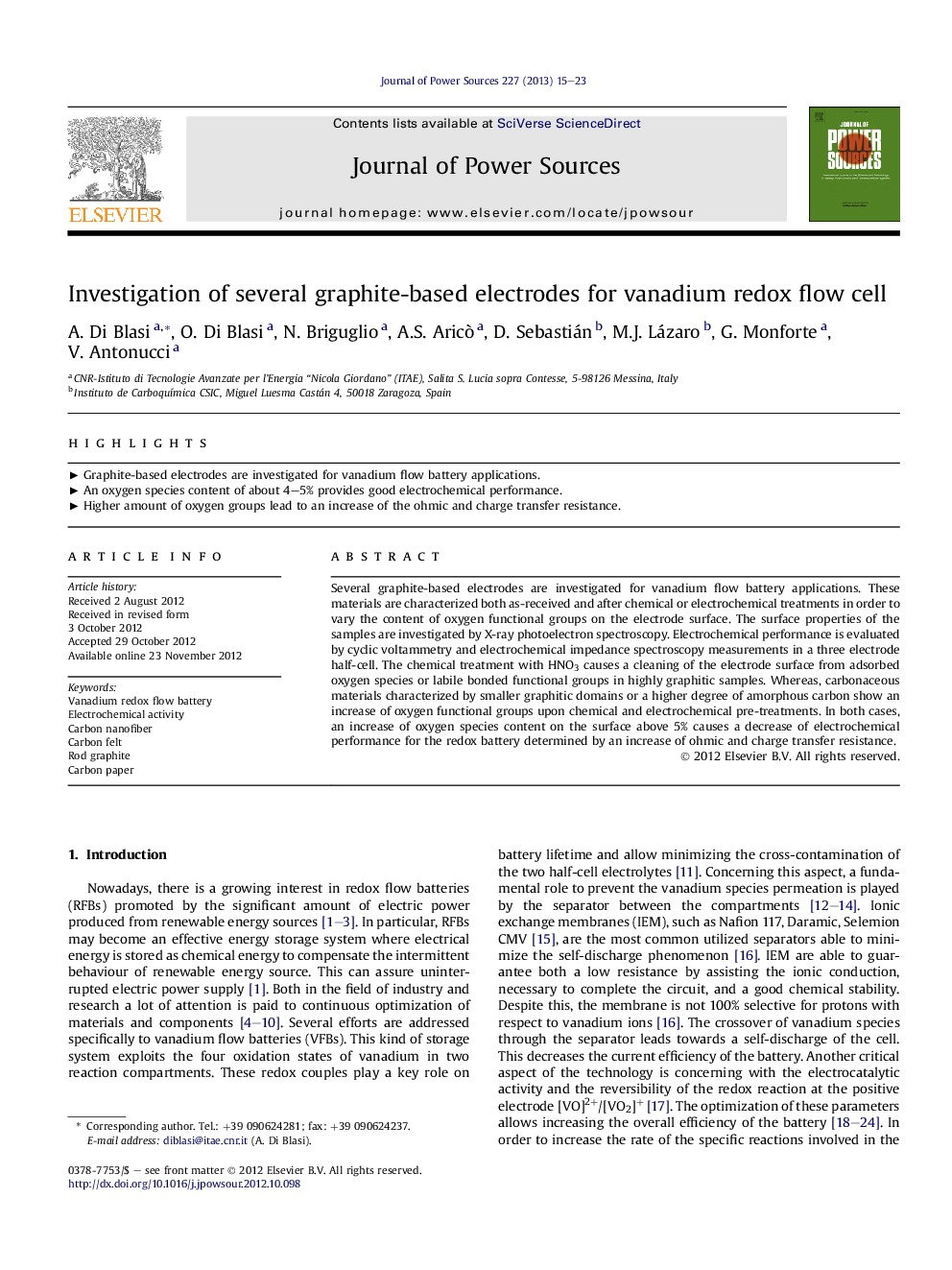| Article ID | Journal | Published Year | Pages | File Type |
|---|---|---|---|---|
| 1288306 | Journal of Power Sources | 2013 | 9 Pages |
Several graphite-based electrodes are investigated for vanadium flow battery applications. These materials are characterized both as-received and after chemical or electrochemical treatments in order to vary the content of oxygen functional groups on the electrode surface. The surface properties of the samples are investigated by X-ray photoelectron spectroscopy. Electrochemical performance is evaluated by cyclic voltammetry and electrochemical impedance spectroscopy measurements in a three electrode half-cell. The chemical treatment with HNO3 causes a cleaning of the electrode surface from adsorbed oxygen species or labile bonded functional groups in highly graphitic samples. Whereas, carbonaceous materials characterized by smaller graphitic domains or a higher degree of amorphous carbon show an increase of oxygen functional groups upon chemical and electrochemical pre-treatments. In both cases, an increase of oxygen species content on the surface above 5% causes a decrease of electrochemical performance for the redox battery determined by an increase of ohmic and charge transfer resistance.
► Graphite-based electrodes are investigated for vanadium flow battery applications. ► An oxygen species content of about 4–5% provides good electrochemical performance. ► Higher amount of oxygen groups lead to an increase of the ohmic and charge transfer resistance.
